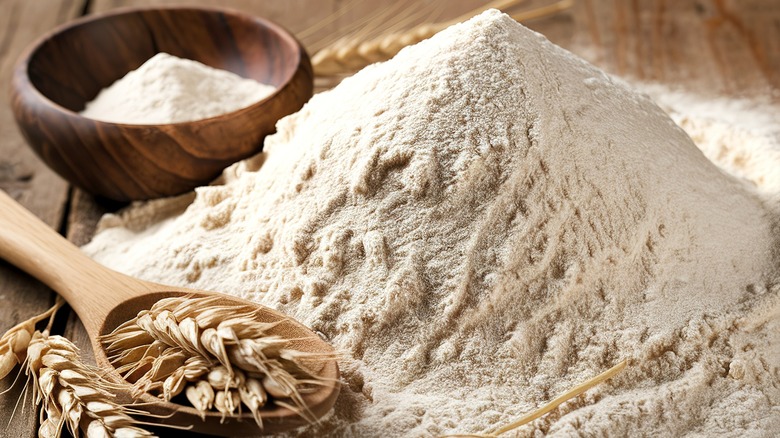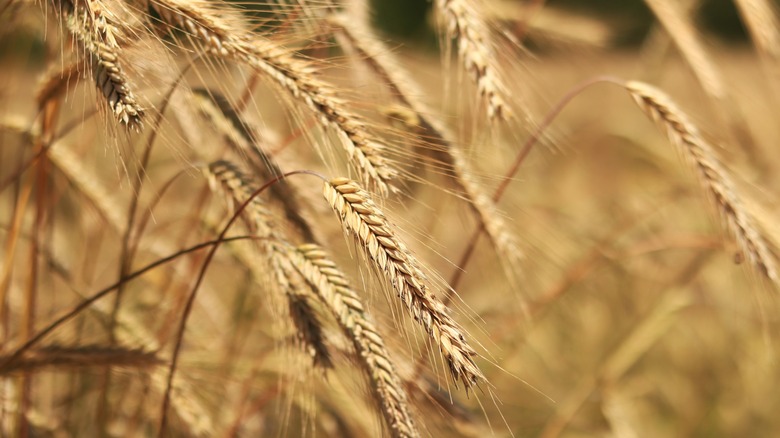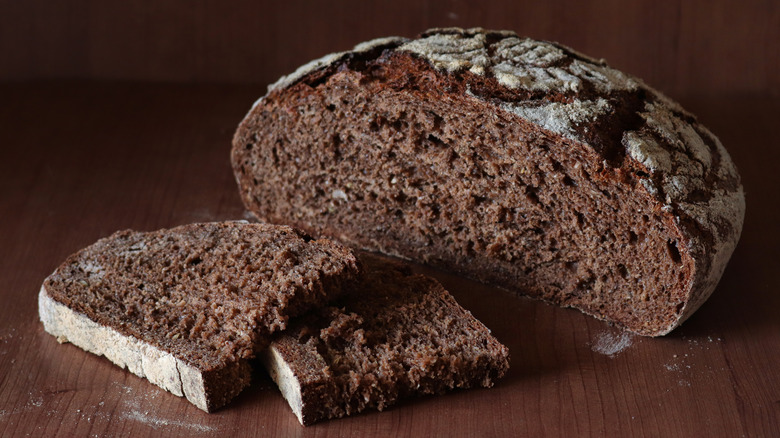The Key Differences In Rye Flours That Every Bread Baker Should Know
We may receive a commission on purchases made from links.
When you think of rye bread, you may envision something light, dark, smooth, or seedy — and you'd be correct, no matter what you picture. There are many kinds of rye flour available in the U.S. For some clarity, we asked Nathan Myhrvold, founder of Modernist Cuisine and co-author of "Modernist Bread at Home," to help us understand the differences. He explained that rye flours are categorized according to how much bran and germ are left after milling — but it's a loose classification.
"The five classifications range from light rye to medium rye, dark rye, pumpernickel, and coarse rye," he said. "In general, the less bran and germ present, the lighter its color. Still, how much bran or germ goes into a particular rye flour is very much open to the interpretation of individual millers." So, if you're looking for a particular style, note that even dark rye flour can be pale in color. And if your recipe calls for a certain type, it's best to go by the name of the product, as it's the rye's content, not the color, that truly sets each variety apart.
A range of bran, germ, and endosperm
To understand the difference between these flours, let's start by taking a closer look at the structure of the individual rye grain, which is what's milled to produce flour. The rough outer surface is called bran, and it contains B vitamins, fiber, and antioxidants. Inside, most of the kernel is made up of endosperm, the starchy material that serves as the plant embryo's food supply. Within that, you'll find the germ, the part of the kernel that can develop into a new plant. It contains proteins, B vitamins, minerals, and healthy fats. When flour is refined, some of the bran and germ are removed, leaving behind mostly endosperm. Exactly how much of each component remains is what defines the different rye flour types.
According to Nathan Myhrvold, light rye flour is primarily endosperm, while medium rye flour contains a little bran. "Dark rye flour is ground finely enough to look more like flour and includes some bran and germ; it's the rye equivalent to whole wheat flour," he explained. Meanwhile, pumpernickel and coarse rye flour contain the most bran and germ. The difference, Myhrvold stated, is that "pumpernickel is a little finer than coarse rye flour, and it has a texture very similar to semolina." Lastly, he explained that "coarse rye flour is essentially smashed rye grains and includes the bran and germ." He also noted that both bran and germ steal water from the dough, limiting the final volume of the bread.
Rye's characteristics in the kitchen
Whatever variety you choose, Nathan Myhrvold pointed out two key differences when baking with rye flours. The first is to due to their abundance of pentosans, a type of polysaccharide (large complex sugar molecule). "Pentosans are highly absorbent, able to absorb up to 16 times their weight in water," he explained. "As a result, rye doughs tend to be stickier than wheat doughs." He suggested adding water to the dough when making bread to compensate for this. Otherwise, the pentosans "will steal water from the rest of the dough, and you'll wind up with an even denser crumb."
The second difference is due to amylase, an enzyme that breaks starch down into sugars. With rye flour dough, the amylase stays active at much higher temperatures than it does with wheat flour dough. According to Myhrvold, "The action of that amylase, which begins before the dough even gets to the oven, can break down dough structure unless steps are taken to prevent it." To combat this effect, he recommended using a rye levain as a leavening agent. This mixture of plain rye flour, water, and sourdourgh starter will help the dough rise and add a complex flavor and chewy texture, giving you even more delicious results as a bonus.


